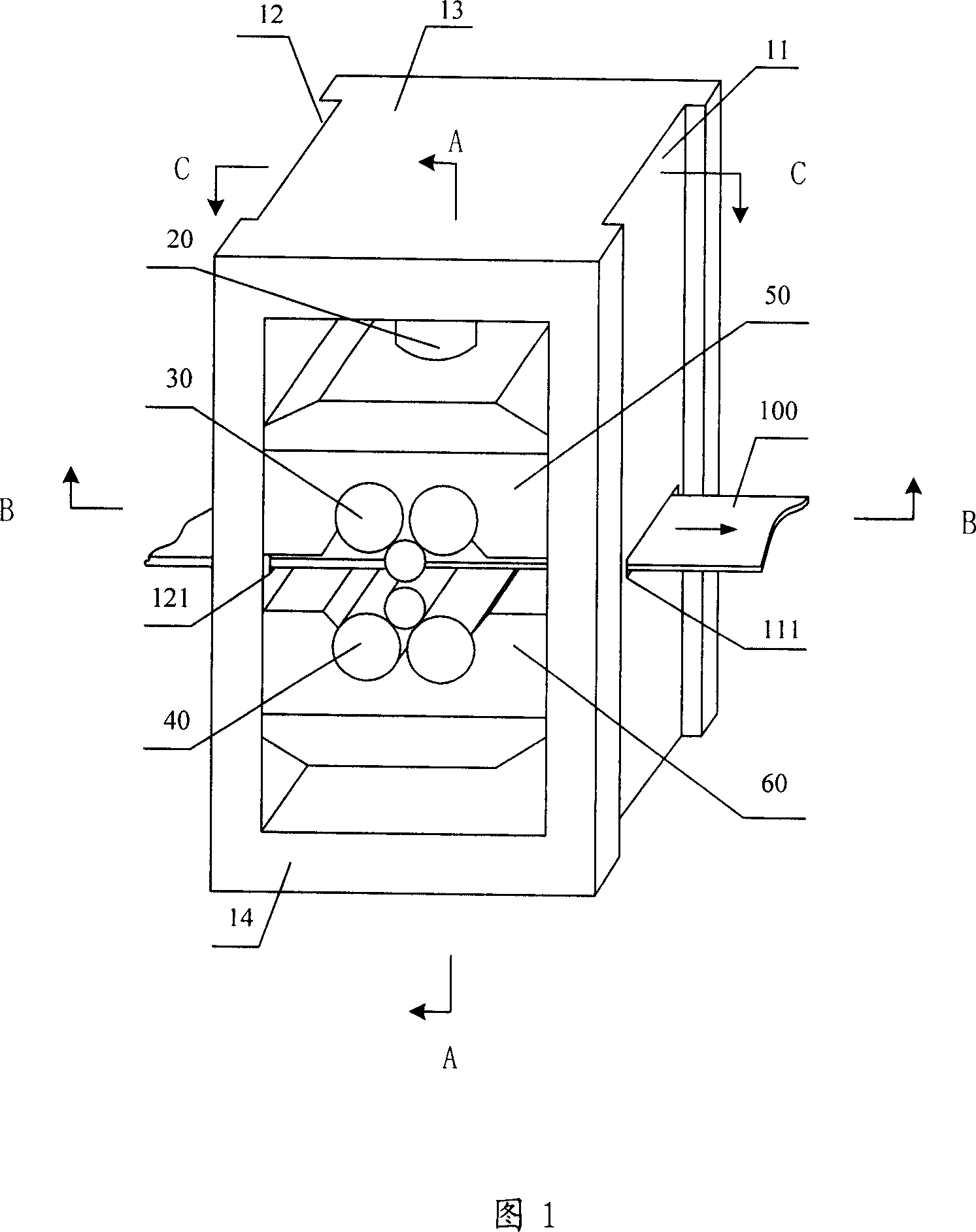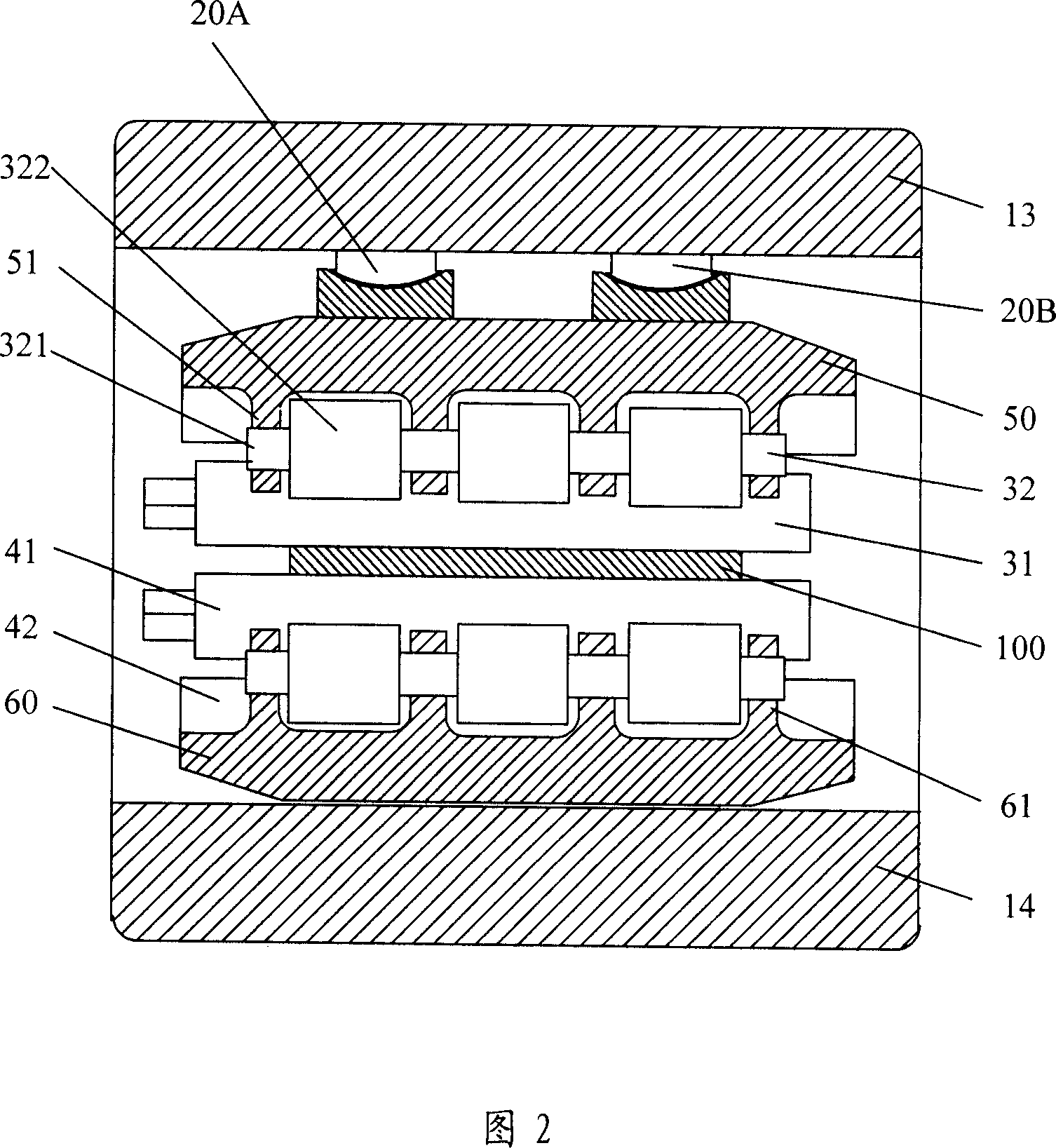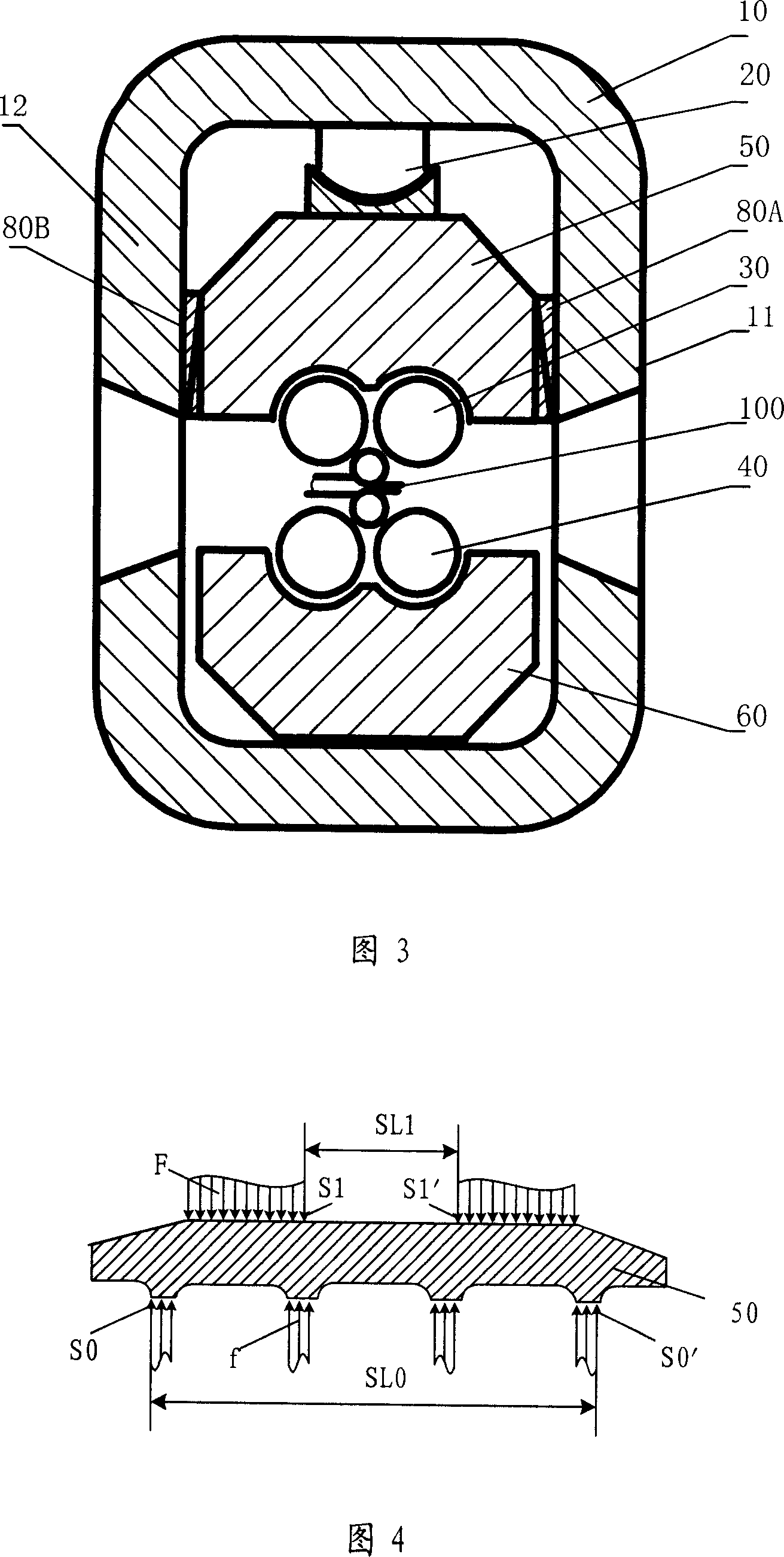Deflection-degree-decreasing rolling mill
A deflection, rolling mill technology, applied in the direction of metal rolling stand, metal rolling mill stand, metal rolling, etc., to achieve the effect of reducing deflection deformation, reducing deflection, and reducing lateral thickness difference
- Summary
- Abstract
- Description
- Claims
- Application Information
AI Technical Summary
Problems solved by technology
Method used
Image
Examples
Embodiment 1
[0048] Fig. 1 is a schematic perspective view of the first embodiment of the present invention, Fig. 2 is a side sectional view of the A-A section of Fig. 1 , and Fig. 3 is a side sectional view of the C-C section of Fig. 1 . As shown in Fig. 1, Fig. 2 and Fig. 3, the present embodiment is a six-high rolling mill, and the main structure includes a frame 10, and the frame 10 is equipped with an upper roll stand 50 and a lower roll stand 60, and the upper roll stand 50 and the lower roll stand The roll stand 60 is connected to the upper tower-shaped roll system 30 and the lower tower-shaped roll system 40 respectively in the form of multi-point support beams, and also includes a pressing device 20 and a horizontal support device 80 . The frame 10 is a whole frame surrounded by a panel 11 , a back panel 12 , a top panel 13 and a bottom panel 14 . The surface of the back plate 12 is provided with a material inlet 121 for the rolled piece 100 to enter, and the surface of the panel ...
Embodiment 2
[0062] This embodiment is based on the embodiment 1, adding some additional components to further improve the precision of the rolled piece.
[0063] A vertical support device 70 for supporting the vertical rolling force is also arranged horizontally between the lower roll stand 60 and the frame bottom plate 14. The vertical support device 70 can be pads of different sizes and specifications, and the thickness forms a series. Pad blocks are used to realize the adjustment of the rolling line, and the vertical supporting device 70 may also adopt a hydraulic device or an electric pressurizing device. There can be one or more vertical support devices 70 .
[0064] FIG. 8 is a schematic diagram of the force on the lower roll stand when a vertical support device is provided. As shown in FIG. 8 , a vertical support device 70 is centrally set between the lower roll stand 60 and the bottom plate 14 . During the transmission process of the above-mentioned rolling force, the lower suppo...
Embodiment 3
[0075] Fig. 13 is a schematic structural view of the third embodiment of the present invention, which is a twelve-high rolling mill. This embodiment is structurally different from the above embodiment in that the upper tower roll system also includes several upper intermediate rolls arranged between an upper work roll and a plurality of upper backup rolls, and the lower tower roll system also includes Several lower intermediate rolls are arranged between a lower work roll and a plurality of lower backup rolls.
PUM
 Login to View More
Login to View More Abstract
Description
Claims
Application Information
 Login to View More
Login to View More - R&D
- Intellectual Property
- Life Sciences
- Materials
- Tech Scout
- Unparalleled Data Quality
- Higher Quality Content
- 60% Fewer Hallucinations
Browse by: Latest US Patents, China's latest patents, Technical Efficacy Thesaurus, Application Domain, Technology Topic, Popular Technical Reports.
© 2025 PatSnap. All rights reserved.Legal|Privacy policy|Modern Slavery Act Transparency Statement|Sitemap|About US| Contact US: help@patsnap.com



